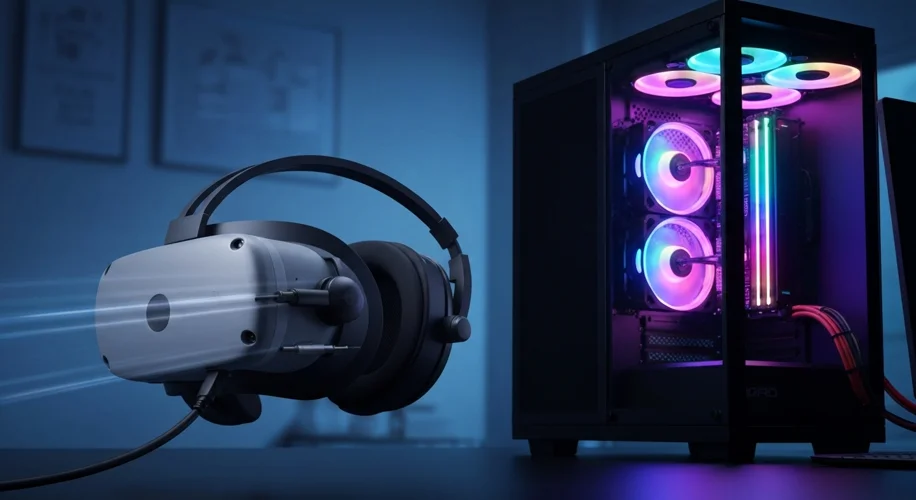Hey everyone, Mateo here!
Today, we’re diving deep into something that’s been on a lot of our minds, especially if you’re rocking a Quest 3 for PC VR gaming or some of those awesome UEVR mods: the wired versus wireless connection. We all want that silky-smooth frame rate and the least amount of heat generated, right? So, let’s break down if going wired actually makes a difference for your GPU and how much heat your headset is spitting out.
The Tech Breakdown: Wired vs. Wireless
When you connect your Quest 3 to your PC, you’re essentially streaming a video signal from your PC to the headset. The difference between wired (usually via USB-C, often called ‘Link’) and wireless (like Virtual Desktop or Air Link) is how that data gets there.
- Wired (USB-C Link): This method uses a physical cable. The data travels directly from your PC’s GPU, through the cable, and into the headset. It’s generally seen as the most stable connection. The Quest 3’s USB-C port is capable of USB 3.2 Gen 1 speeds, which is plenty for VR.
- Wireless (Wi-Fi): This uses your home Wi-Fi network to send the video stream. Your PC’s GPU renders the frame, then the PC encodes it into a video stream, sends it over Wi-Fi to your headset, where the headset then decodes it.
GPU Usage and Heat Generation: Where’s the Difference?
Here’s the juicy part. Does going wired reduce your GPU load or make your Quest 3 run cooler?
- GPU Usage: For raw GPU load, the difference is often minimal, bordering on negligible for most setups. Both methods require your PC’s GPU to render the game at the resolution and frame rate you’ve set. The main difference comes in the encoding and decoding process. When you use wireless VR, your PC has to encode the video stream for transmission, and your headset has to decode it. This adds a small overhead. With a wired connection, the encoding/decoding might be handled more directly by the hardware, potentially being slightly more efficient, but the fundamental rendering load remains the same. Think of it as the cable just being a more direct highway for the data.
- Heat Generation: This is where you might notice a difference.:
- Wired (USB-C): The USB-C cable not only transfers data but also often charges your Quest 3. This constant power draw and data transfer can contribute to the headset warming up. The cable itself can also act as a slight heat conductor.
- Wireless (Wi-Fi): When you’re on Wi-Fi, the headset’s wireless adapter is working harder, and the processor is handling the decoding. This also generates heat. However, without the direct power draw from a charging cable, some users report slightly less heat build-up compared to being plugged in via USB-C.
Ultimately, both methods will generate heat. The quality of your PC’s components (especially the GPU and CPU), the game you’re running, and the ambient temperature will play a much larger role in overall heat than the connection type itself.
Programs for PC VR and UEVR Mods
When it comes to actually playing PC VR games or using mods like UEVR, you have a few go-to options:
- Virtual Desktop: This is a fan favorite for wireless PC VR. It’s known for its excellent performance and highly customizable settings. It’s a paid app on the Quest store, but many find it worth every penny for the smooth, low-latency wireless experience.
- Meta Quest Link (formerly Oculus Link): This is Meta’s own solution, using the USB-C cable. It’s free and generally provides a very stable connection. It works well for most games and is often the easiest to set up if you’re going wired.
- Steam Link: Valve’s offering for streaming SteamVR games wirelessly. It’s also free and integrates directly with your Steam library. It’s a solid option if you’re primarily in the Steam ecosystem.
For UEVR mods, most people find success with either Virtual Desktop for a wireless experience or Meta Quest Link for a wired connection. The key is often ensuring your PC meets the game’s requirements and that your network (for wireless) is robust.
My Take
In my experience, while wired is super reliable and might feel slightly more

